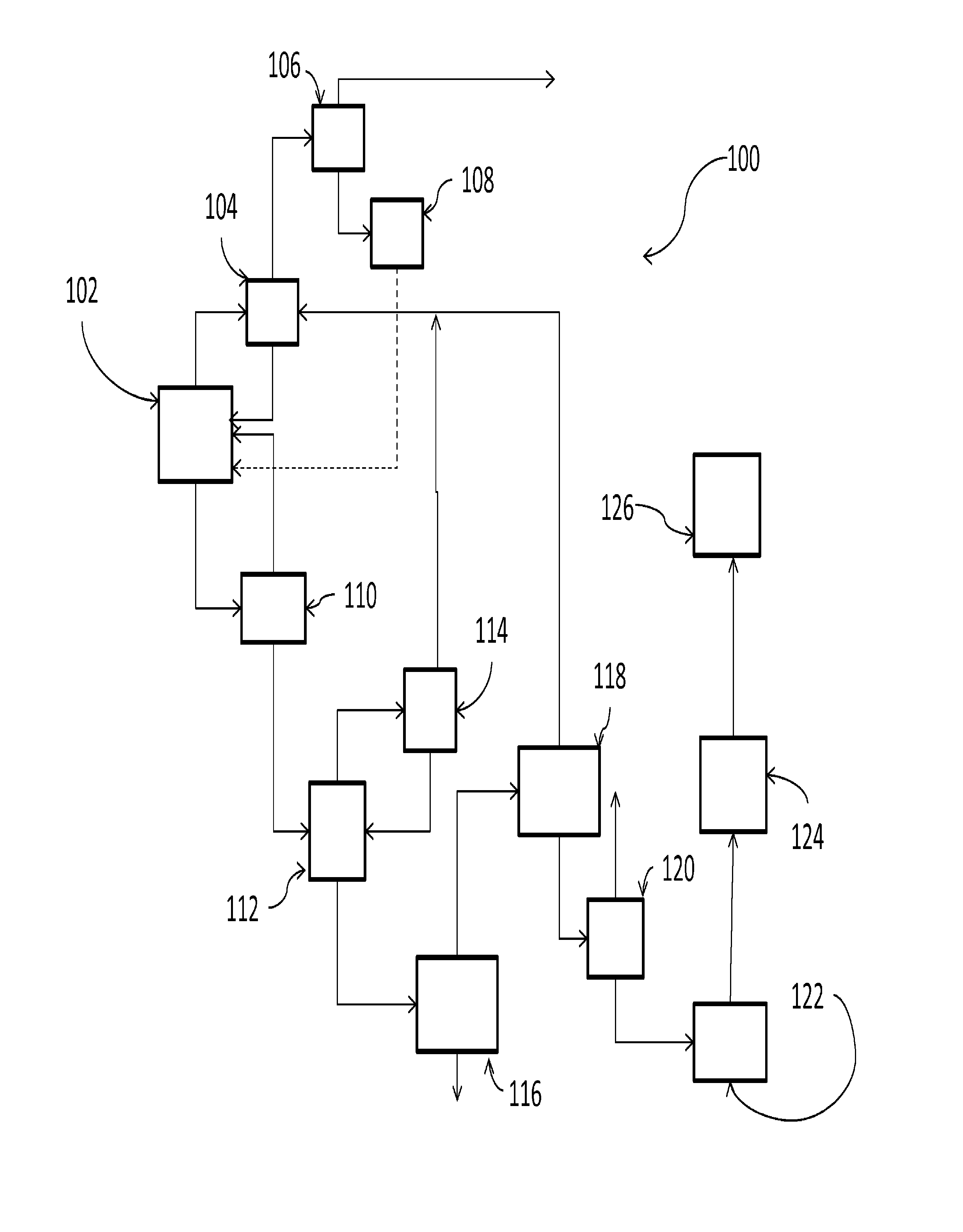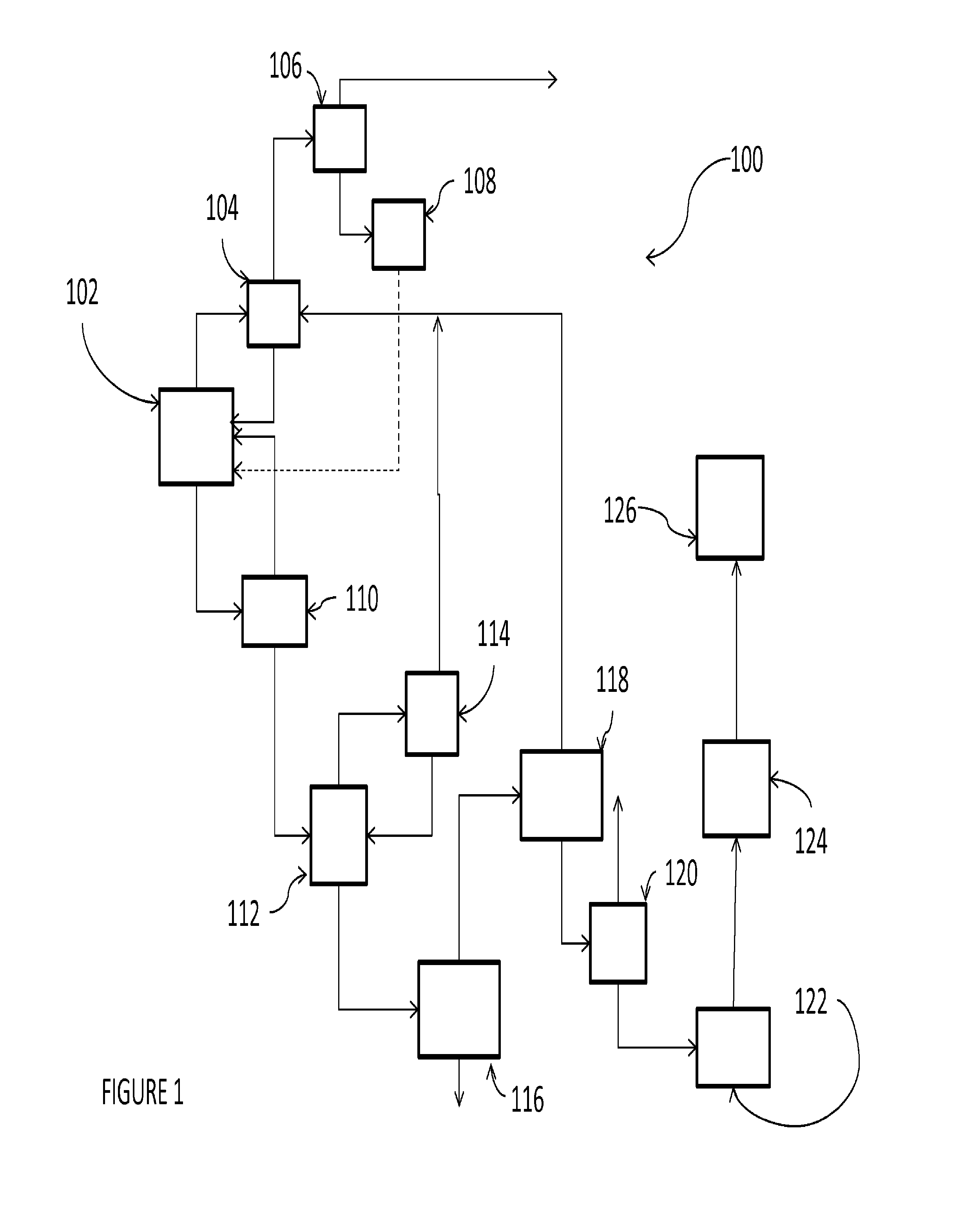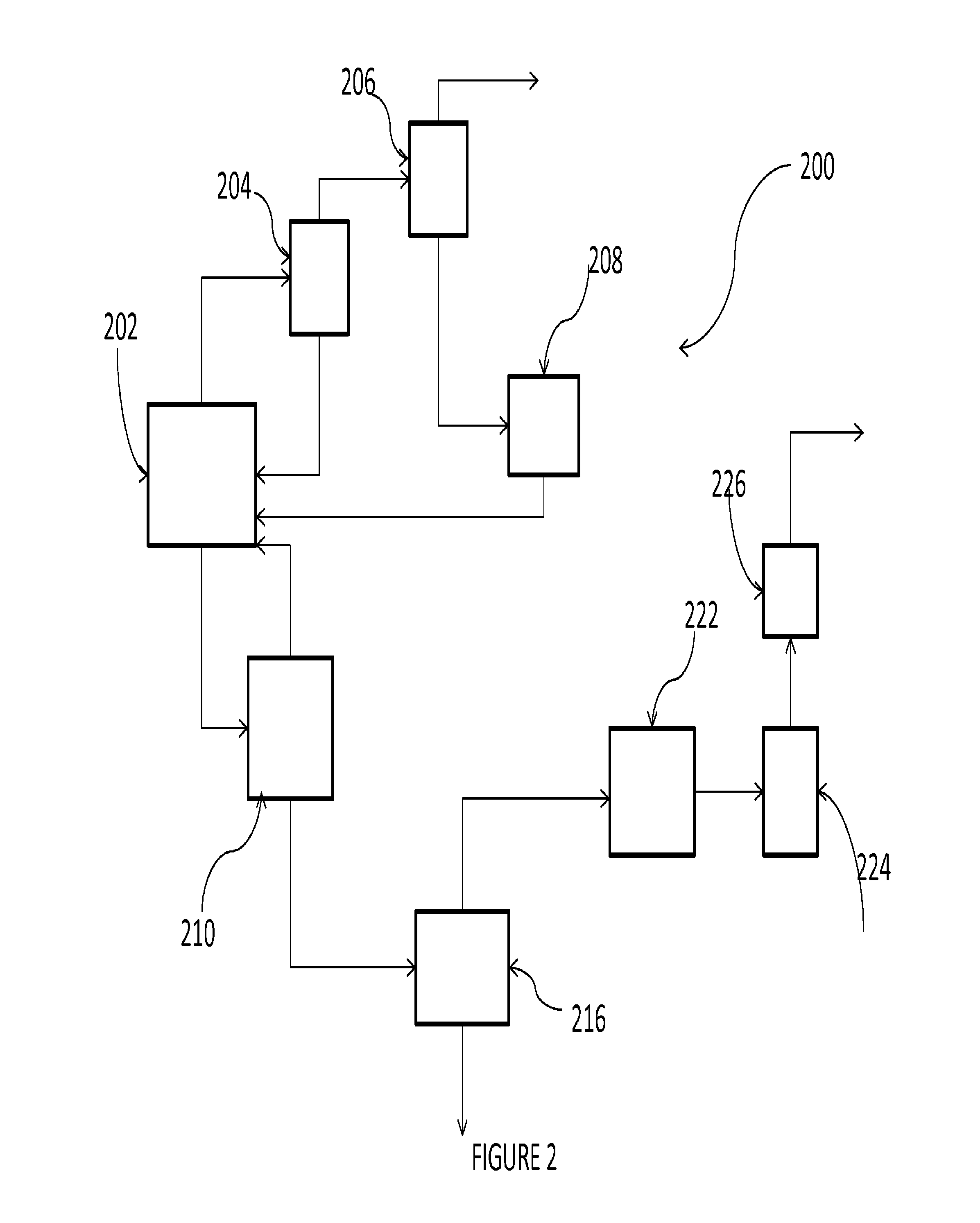Chlorinating agents
a chlorinating agent and chlorinating technology, applied in the field of chlorinating agents, can solve the problems of increasing the cost of chlorinated propene, affecting the quality of chlorinated propene, and limited commercial availability of many chlorinated propenes, so as to achieve less cost of mixing, reduce the cost of mixing, and reduce the selectivity of desired products
- Summary
- Abstract
- Description
- Claims
- Application Information
AI Technical Summary
Benefits of technology
Problems solved by technology
Method used
Image
Examples
example 2
[0083]A 50 ml flask equipped with a magnetic stir bar, reflux condenser, mineral oil bubbler, and heating mantle is charged with aluminum chloride (0.5 g, 3.7 mmol) and sulfuryl chloride (17 g, 126.0 mmol) under an inert atmosphere. The mixture is heated to an internal temperature of 60° C. and then charged with 1,2-dichloropropane (4.05 g, 35.9 mmol), which induces a rapid evolution of gas and a color change of the reaction mixture.
[0084]After 60 minutes, an aliquot of the reaction mixture is removed, quenched with water, and then extracted with methylene chloride prior to gas chromatographic analysis. The GC analysis shows an internal reaction speciation of 65% 1,2-dichloropropane, 33% 1,1,2-trichloropropane, 1% 1,2,3-trichloropropane, <0.5% 1,1,2,3-tetrachloropropane, <0.5% heavies. This shows that 35% conversion of PDC is observed with 33:1 molar ratio of 1,1,2-trichloropropane (112TCP) to 1,2,3-trichloropropane.
[0085]While the conversion in the comparative example using Cl2 is ...
example 3
[0086]A 50 ml reactor equipped with an overhead agitator and heating mantle is charged with aluminum chloride (0.5 g, 3.7 mmol), sulfuryl chloride (17 g, 126.0 mmol), and chlorine (4.05 g, 35.9 mmol) under an inert atmosphere. The mixture is heated to an internal temperature of 60° C. and then charged with 1,2-dichloropropane (4.05 g, 35.9 mmol), which induces a rapid evolution of gas and a color change of the reaction mixture.
[0087]After 60 minutes, an aliquot of the reaction mixture is removed, quenched with water, and then extracted with methylene chloride prior to gas chromatographic analysis. The GC analysis shows a higher conversion of PDC and higher overall yield of trichloropropanes than example 1, along with a high regioselectivity towards 112TCP similar to example 2.
example 4
[0088]This example illustrates the use of SO2Cl2 as chlorinating agent and the ionic chlorination catalysts I2 and AlCl3 to convert 1,2-dichloropropane to C3H5Cl3, C3H4Cl4, and C3H3Cl5 isomers.
[0089]Chlorination of 0.95 gr of PDC to 1,1,2,2,3-pentachloropropane (240aa) is conducted with 4.5 molar equivalent of SO2Cl2 for 8 hours at from 50° C. to 70° C. A 4 dram vial equipped with micro-flea stir bar and water condenser at the overhead padded with N2 is used. The combined catalysts (7 mg I2, 20 mg AlCl3) are added to the solvent under N2 and the reaction is heated to 55° C. for 3 hours. The loss of HCl and SO2 decreased over this period and so the reaction is heated to reflux (70° C. headspace) for 4 hours while monitoring by NMR. At 7 hours another 1 equivalent of SO2Cl2 (1.13 g) is added and reflux is continued for 1 more hour. The reaction content is then added to 5 mL cold water with mixing to give a clear white phase of oil. The bottom phase is carefully pipetted and the aqueou...
PUM
| Property | Measurement | Unit |
|---|---|---|
| temperatures | aaaaa | aaaaa |
| temperatures | aaaaa | aaaaa |
| temperature | aaaaa | aaaaa |
Abstract
Description
Claims
Application Information
 Login to View More
Login to View More - R&D
- Intellectual Property
- Life Sciences
- Materials
- Tech Scout
- Unparalleled Data Quality
- Higher Quality Content
- 60% Fewer Hallucinations
Browse by: Latest US Patents, China's latest patents, Technical Efficacy Thesaurus, Application Domain, Technology Topic, Popular Technical Reports.
© 2025 PatSnap. All rights reserved.Legal|Privacy policy|Modern Slavery Act Transparency Statement|Sitemap|About US| Contact US: help@patsnap.com



